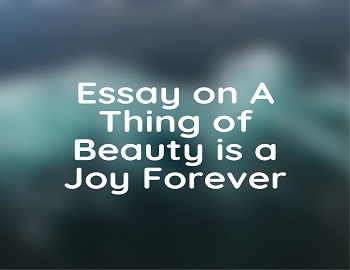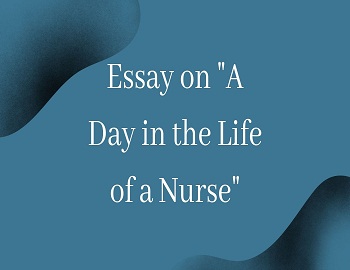A Thing of Beauty is a Joy Forever:
This famous line by Keats is frequently quoted by lovers of his poetry. It is from his first major poem called Endymion. The theme of the poem is Keat’s thirst for ideal beauty. Endymion is a young shepherd lover who falls in love with the Moon-goddess, Diana. Diana symbolizes ideal beauty, while Endymion is the human soul in search of this ideal beauty. The opening stanza begins with the line which is the subject of our essay.
| A thing of beauty is a joy forever; Its loveliness increase; it will never Pass into nothingness… |
It is interesting to note that the greatest lines in poetry are simple, and yet there is in them some quality that makes them outstandingly great.
But what message does the line give to the general reader? It seeks to remind him that a beautiful thing is a source of never-ending joy. Keats goes on to say that our souls are continually uplifted by “Some shape of beauty,” may be the setting sun, daffodils, or a forest. All lovely tales that we have heard or read are a source of everlasting joy. In Keats’s words, they are “An endless fountain of immortal drink/Pouring onto us from the heaven’s brink”. These things of beauty haunt us. Beauty and happiness are twins, the one is inseparable from the other.
The ancient Greeks were genuine admirers and worshippers of beauty. Greek art is a reflection of Greek life. In its Golden Age, it was the imaginative expression by every citizen of the harmonious ideal towards which he was striving. Art for art’s sake had no meaning for the Greeks. The artistic outlook was the passion of the greeks. The thirst for beauty and harmony enriched every phase of the citizen’s life. The good life was in the highest sense the beautiful life, reflected in the inner harmony of all phases of the individual- physical, moral, and intellectual. A work of art was beautiful in part because it exalted the moral ideals of the race. Greek architecture developed in terms of temples rather than palaces. Greek sculpture gave concrete personalities to the gods. The Greek epic reflected the lives of the gods as well as heroes. Greek drama originated in the chorus of religious rituals. In short, there was a oneness of the aesthetic and ethical ideals in their attitude to all arts.
Keats was a great lover of Greek culture and mythology. He delighted in Greek myths. He recognized in the Greek masters the most perfect presentation of the beautiful. It was, however, only one aspect of Greek art. He saw its beauty, but he did not see its purity, its restraint, its severe refinement. Nevertheless, what brings him so close to the ancient Greeks is his love of beauty. He loves the principle of beauty in all things. For him, a thing of beauty is a joy forever. Beauty was truth and truth was beauty.
Most of us, however, use the term “beauty” to denote what is pleasing to our senses for a short while and not what is abidingly charming to the soul. We get delighted from both. But it is only the second kind of beauty viz. the beauty of the soul that constitutes a joy forever.









Comments (No)